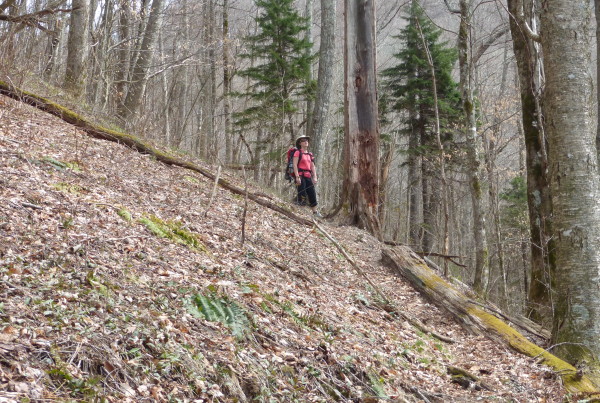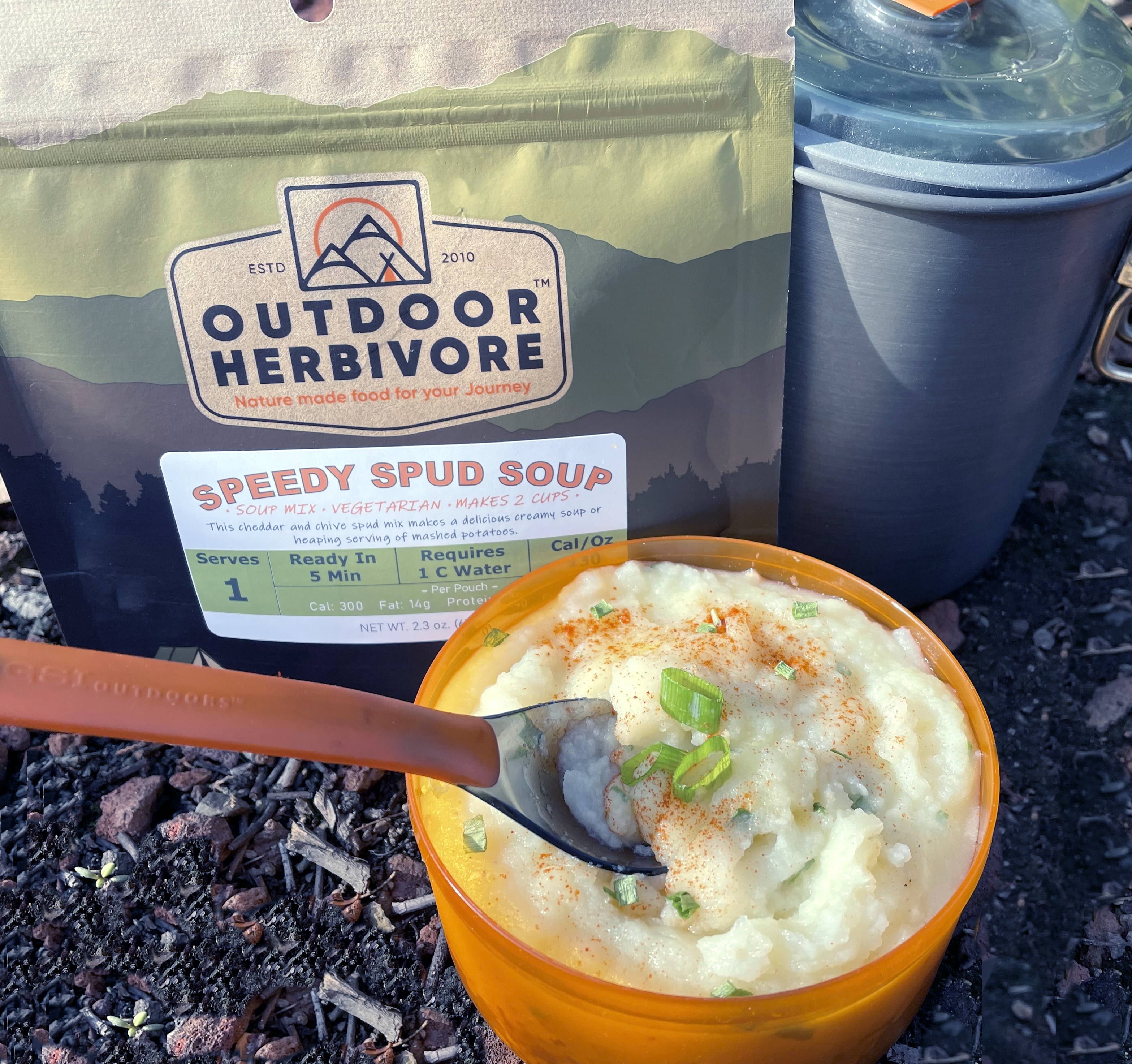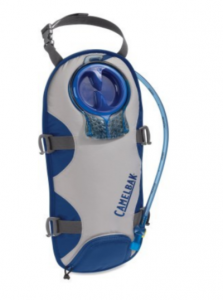Backpacking involves a long and steady aerobic workout with fitness benefits that rival other more intense, higher impact activities. Although backpacking is a non-competitive recreational activity with a low chance of burn-out, the constant climbing and descending can lead to cramping and injury. Besides the overuse of the muscles, leg cramping is exacerbated by inadequate eccentric contraction strength, dehydration, electrolyte imbalance from sweating, and insufficient carbohydrate intake.

Common Causes of Leg Cramps When Hiking
When you are backpacking, the muscles in your leg contract while in motion and stretch out when the motion is completed, or another muscle moves it in the opposite direction. The leg muscles continuously shorten and lengthen to stabilize you while you climb and descend on rugged terrain.
Backpacking involves both concentric muscle contraction (muscles shortening under tension) and eccentric muscle contraction (muscles lengthening under tension). Concentric muscle contraction is used for hiking uphill, cycling, and lifting weights, while eccentric action is used for reducing speed when hiking downhill.
Lack of eccentric muscle training
Research shows that most leg cramps, soreness, and injury are from eccentric contractions. To put it simply, as you hike downhill, your body gains momentum. To slow (or stop) that momentum, your knee and hip muscles must contract in a way that lengthens the muscle under tension, which is called an eccentric contraction. Most of our daily activities, including strength training, do not involve enough of this type of motion. For instance, treadmills have an incline setting for concentric strength training, but no decline setting for eccentric training. Unsurprisingly, these muscles are not adapted, and you will need to train for eccentric movement, specifically the quadriceps. The best way to train these muscles is by walking downhill (or downstairs) with a loaded pack or ankle weights. Performing squats is another exercise you can do to build eccentric muscle strength and reduce cramping and soreness.
For a complete list of workouts, see backpacker’s hike further, hike stronger and section hiker’s 10 exercises to become a badass hiker.
Downhill hiking also places significant stress on your ankle, knee, and hip joints. If you have problems in these areas, read our article on saving your knees hiking downhill.
Dehydration
Dehydration is the most common reason for leg cramping while hiking. Adequate fluid intake is crucial because it is needed to process nutrients in your cells and ultimately provide energy.
Since water molecules are small, they continuously move inside and outside the cell membrane, keeping cells hydrated. When the body becomes dehydrated, the fluid outside of the cells decreases, and water molecules gravitate inside cells to interact with proteins, sugars, and other molecules. This net reduction in fluid causes nerve endings to flatten, hyper excite, and spontaneously discharge, which is felt as a muscle spasm. Maintaining proper hydration prevents dramatic shifts of fluid in your cells, which contributes to abnormal muscle contractions and muscle cramping. Therefore, if you experience cramping while hiking, the first thing you should do is drink water.
Electrolyte Imbalance
Besides losing water from sweating, you also lose electrolytes, especially sodium and chloride (salt). Salt depletion could be the culprit if drinking water does not reduce cramping while backpacking. Muscles sometimes involuntarily fire when salt is depleted, causing intense pain. Thus, eat a salty snack and drink water as soon as you feel cramping.
The fastest way to get sodium in your body is to add it to your drinking water. Add 1/4 to 1/2 tsp of salt, about one salt packet, to a standard (32 fl oz, about 1 L) water bottle. If you are sodium deficient, the cramps will subside within minutes.
- The sodium deficit required to prompt muscle cramping is not well understood. However, studies estimate that sweat-induced sodium losses between 20% to 30% are all it takes to produce severe muscle cramping.
- Because of the high salt content of most backpacking food, you can replace sodium losses during meals without adding extra sodium. However, suppose you are sweating profusely, and your skin is chalky with salt. In that case, you must consume extra salt and electrolytes such as potassium and magnesium to enhance recovery. Munch on salty snacks like salted nuts, pretzels, or jerky while hiking, and eat a wide variety of trail meals such as pasta with a cheese or pesto sauce, or a rice dish with soy sauce.
Another culprit of cramping is caused by an electrolyte imbalance of potassium, calcium, and magnesium, which are all essential for muscle function. Luckily, only a small amount is needed, and these are easy to get in a healthy diet. At every opportunity, eat trail foods that are high in these minerals. Ensuring these foods are part of your trail diet will reduce the risk of cramping and improving your overall hiking experience.
- Good vegan sources of magnesium – nuts, seeds, oats, dark chocolate, spinach, lentils, soy, beans, brown rice, and quinoa.
- Good vegan sources of potassium – dried fruit & vegetables (apricots, apples, figs, coconut, prunes, banana, plantains, dates, raisins, tomato, carrots), avocado (eat fresh), spinach, beans, lentils, and potato flakes.
- Good vegan sources of calcium – soy, spinach, hummus (sesame), almonds, chia seeds, and beans.
Sweat losses vary according to the type of activity, the intensity of exercise, and environmental conditions. According to Gale Bernhardt, USA Triathlon coach, an average person sweats between 0.8 to 1.4 liters (roughly 27.4 to 47.3 oz.) per hour during exercise. This table shows typical electrolyte losses per two pounds of sweat, which is equivalent to one liter (about one quart) of water volume.
| Electrolyte | Average amount per 2 lbs of sweat, about 1-quart | Food reference |
| Sodium | 800 mg (range 200-1,600) | nearly any packaged food |
| Potassium | 200 mg (range 120-600) | 2 tbsp sunflower seed = 240 mg |
| Calcium | 20 mg (range 6-40) | 1 tbsp chia seed = 170 mg |
| Magnesium | 10 mg (range 2-18) | 1 tbsp peanut butter = 25 mg |
Most muscle cramps are caused by sodium losses rather than magnesium and potassium because we lose more sodium in sweat than the other electrolytes. However, all electrolytes are essential for retaining water in the body. If you are deficient in any of these minerals, you may remain dehydrated and at risk for cramps, no matter how much water you drink.
Inadequate Carbohydrate Consumption
Carbohydrates are the preferred source of energy used by the body. Carbohydrates, particularly complex starches, are the most efficient fuel source for the muscles. Backpacking and other low-intensity endurance activities require a higher daily intake of carbs to keep up with energy demands. Not eating enough carbohydrates can deplete glycogen stores, causing impaired muscle functioning and leading to muscle cramps.
Focus on eating carbohydrate-rich trail food containing multiple sources of electrolytes. Some of the entrees that I would recommend by Outdoor Herbivore include –
Hot Meals High in Complex Carbs & Electrolytes:

- Backpack Chili Mac – quinoa, pasta, beans
- Blackened Quinoa – quinoa & beans
- Chickpea Sesame Zetti – sesame seed, chickpea, spinach
- High Elevation Rice Cereal – brown rice, almonds, raisins, soy milk
- Lickety Split Lentils – brown rice, lentils, spinach, peanut
- Naked Freckle Burrito – brown rice & beans
- PeaNutty Matchsticks – coconut & peanut
- Pierogi Pasta Pouch – potato, cheese, lentils, pasta, cabbage
- Sunrise Tofu Scramble – tofu, vegetables, spinach
No-Cook Meals & Snacks High in Complex Carbs & Electrolytes:
- Blueberry Vanilla Crunch – oats, almonds, sunflower, coconut, soy milk
- Coconut Chia Peel – banana, coconut, dates, chia seed
- Cocoa Nutty/CinnaMonkey Chomps – banana, coconut
- Fiesta Quinoa Salad – quinoa, beans
- Instant Hummus – chickpeas, sesame seed
- Lazy Lentil Salad – lentils, sunflower seed
- Sunny Sunflower – quinoa, beans, sunflower seed
- Toasted Sunburst Muesli – oats, nuts, seeds, raisins, dates, soy milk
- Midnight Mocha Chia – banana, dark chocolate, oats, coconut, chia seed
Now you know what you can do to diminish leg cramps. Before you hit the trail, start by strengthening the quadriceps with eccentric exercise. When on the trail, make sure you keep a proper diet and drink plenty of water. Beyond that, give yourself multiple rests on the days when you are climbing and descending more than you are used to.
Article sources:
Backpacker: Strength: Incorporate Eccentric Training to Climb With Power — And Descend Without
Vegetarian Sports Nutrition By D. Enette Larson-Meyer
Muscle Cramps during Exercise V Is It Fatigue or Electrolyte Deficit? Michael F. Bergeron National Institute for Youth Sports & Health at Sanford, Sanford USD Medical Center, Sioux Falls, SD


12 thoughts on “Eliminate Leg Cramps while Hiking”
Great article – I love your posts! Thank you for all the knowledge.
Great article! I had been onthe rigt track with salt
I get painful cramps in my ham strings after a hike. I isolated it to ITB – illiotibial band syndrome. Stretching out and rolling the fascia is helping. Best sustained holds for this are squatting and sitting back on your heels. Then transitioning to pigeon.
I’ve been dealing with knee pain caused by a tight IT band for several years. Keeping up with stretching and strength training go a long way. A foam roller (or kitchen rolling pin) is great for circulating blood flow and loosening the muscle. Pigeon has to be the most torturous pose there is, although it is incredibly beneficial for opening the hips and hamstrings.
This post sounds like most people get cramps during hiking. I never do, but I get cramps much later, usually in the middle of the night while sleeping or when bending my legs to stand up or get in/out of a sleeping bag, and always in the calf. This happens during both hiking and cycle touring. I’ve had a tough time narrowing the cause down because it’s just uncommon enough to let me forget about it, but common enough to be systematic. I’m not good at keeping up with stretching, but it seems to happen regardless of how much I stretch. Does this sound like anything specific to anyone?
Assuming you are managing your water and food intake properly and have no medical issues, the cramping is likely a delayed response from muscle overexertion. The leg muscle fibers contract after exercise and any further shortening can result in spasms. Nocturnal cramping is common after exercise because muscle lengthening is not happening while you sleep. Cramping at night may be prevented by altering your sleep position. The natural tendency is to sleep by bending the knees and pointing the feet down slightly. This position further shortens the calf muscles making them more prone to cramping. You want to avoid allowing your toes to point downward while sleeping. Try rolling up clothing and placing at the foot of your sleeping bag to prop your feet up when sleeping. If the cramps awaken you, stretch your legs while laying on your back. Straighten the cramped leg by pulling your toes toward your head and massaging the calf with your other hand. Lengthening the calves should relieve the spasm quickly. If this doesn’t help, another idea to try is mustard! Allegedly, eating mustard or other strong/spicy substance eliminate cramps and the effect is immediate. The theory behind why this works is because misfiring nerves are what trigger muscle cramps. Scientists hypothesize that strong flavors overwhelm the misfiring nerves resulting in a numbing effect similar to brain freeze. Pack a few mustard packets on your next hike and report back if this helps. More info about the mustard curative is at health.harvard.edu/bone-and-muscle-health/is-there-hope-for-leg-cramp-sufferers. I am interested to hear if any of this works out for you.
Thank you for the article as it was very informative! I have been buying your food for quite some time as I have been a whole food plant based eater for quite some time. I was eating your foods on my most recent hike. I hiked on the AT (AT mile markers. Start 420…428.3…437.6…end at 449 – approx 32 miles I think) this past Labor Day weekend with a friend. I am 47 and I do quite a bit of HIIT training (approx 30 mins daily 5x week) and am moderately fit. I do hike as I live in WNC, but with young children not as often as I would like. I say this, to say on my hike I experienced moderate cramps in my quads for the first time ever on the second day (first day 9 miles) at approx 8 out of 13 on the second day. We were having to ration our water as one of the maintainers told us at the hostel we started at that water was very scarce and he was correct. I was sweating like crazy and I think I had the electrolyte imbalance as well as some dehydration, but we were still drinking approx 8 oz or more about every 30 mins. The last part of the hike to the 13 mile mark on the second day and the whole
following day was pure torture as I was not only cramping, but had little to no energy, was nauseated and mildly dizzy. This was something I have never experienced before and I have been taking 20 + mile hikes for a while. I am sure running in little to no sleep wasn’t helping either. I am trying to figure out what I did wrong to avoid any of this in the future! Thanks for reading this post and sorry if it is long 😬.
Hi Keenan, good to see you here! It sounds like you are quite healthy and were consuming enough fluids on your hike if you were drinking 8 oz of water every half hour. I presume your muscle spasm might have been due to sleep deprivation. The only other thing I can think of is that you weren’t consuming enough carbohydrates for energy. I get very lightheaded and dizzy when I don’t sleep well. Eventually, your body gets so exhausted that deep sleep comes easily (usually by the 3rd night out) and everything starts to normalize. Hopefully, it doesn’t happen to you again. Cheers and happy trails.
Love your article. When you say to add 1/4 to 1/2 tsp of salt in the water, how much water are we talking about? Not sure whether to add it to a cup of water or a gallon of water. 😀
Thanks for the question, Judy! This amount of salt is for a full 32 oz Nalgene water bottle. We’ve updated our article to clarify that.
Mustard is mentioned as an aid for cramps which I have heard and tried. A swallow or 2 of dill pickle juice also is supposed to be effective .
I’ve been dealing with leg cramps for years, and it’s such a frustrating experience. These tips are really helpful. I’ll definitely try incorporating more potassium-rich foods into my diet!